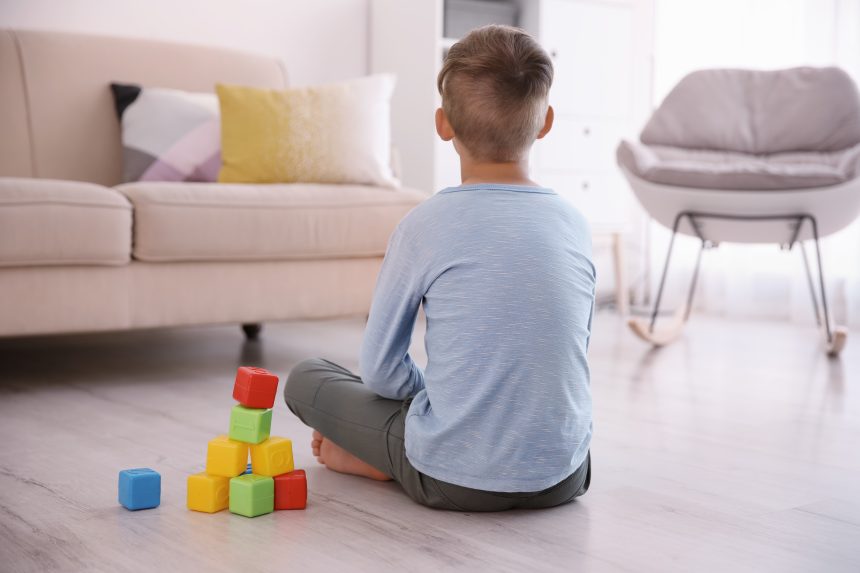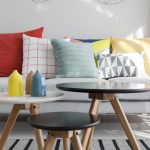Every hour, three children in the United States are diagnosed with Autism Spectrum Disorder, or ASD (Nagib & Williams, 2018). More research is being conducted every year on Sensory Processing Disorder, or SPD. There’s increased awareness around both disorders, but no one knows how to deal with them better than you and your family. Your home should be a refuge from the outside world, but it doesn’t always feel that way.
As the parent of a child with ASD/SPD, you may feel your home is a place of chaos and disarray. It’s easy to feel trapped. Worry, embarrassment, and crisis management can become part of the routine.
While the science on home modifications for these disorders is underserved, it is growing. This article will take a research-based view to find which home modifications have made a real difference in the lives of ASD/PSD families. It’ll discuss the foundational principles of modifications and why they’re important. Finally, it’ll give examples of changes you can make to your own home.
Why Modify Your Home?
Nagib and Williams (2018) found that most ASD families spend $1,000 to $5,000 on their modifications, but is it worth it? The short answer is: absolutely.
Behavioral Problems Linked to the Environment
Growing evidence suggests that behavioral problems link to a person’s environment (Carr, 2007). By modifying their environment, you can change their behavior (Anderson, 1998).
This means you’ll see real, immediate results. You can get the actions you’re looking for by making a few tweaks to a person’s surroundings.
Control and Relaxation
Your home should be your sanctuary, yet many ASD/SPD families report feeling trapped in it. These modifications can help give you the peace and control you’ve been looking for.
You’ll be able to relax and take a breath without your child demanding 100% of your attention. This is critical for your mental health and the health of a family. It’s important to take time to yourself and do what you want to do—even if it’s only for a few minutes.
Lasting Independence
Some children on the spectrum will be able to live independently in their adulthood. Others will need supervision for the rest of their lives, but it doesn’t have to be undignified.
You want your child to be as independent as possible—whatever that means for your family. Invest in your child’s future by giving them an environment they can thrive in. A non-threatening home with comfortable stimuli can work wonders.
Principles of Home Modification
This article will be based on a few key principles. The following are things to keep in mind while you’re reading.
Differences between Autism and Sensory Processing Disorder
Sensory Processing Disorder is often mistaken for autism due to overlapping symptoms. For example, kids with either disorder might have trouble dealing with a busy environment like a playground or amusement park. They might also need a great deal of stimulation to become alert and active. In these cases, distinguishing between the two disorders could be difficult.
In general, people with autism have trouble processing facial emotions and social behaviors. People with SPD have trouble processing sights, sounds, or physical touches. Many people with autism also have SPD, but not everyone with SPD has autism.
You can apply most of the advice in this article to both disorders. Some tips only apply to one, so you may find it necessary to disregard certain points. Regardless, keep in mind that the needs of each family will vary based on budget, behavioral and therapeutic needs, home size, location, and more.
Gesler’s Theory of Therapeutic Landscapes
This article designs a happy home by using Gesler’s framework for therapeutic landscapes (2003). His book, Healing Places, asks these questions: Why do we like certain places? Why does a spa feel relaxing? Why are we refreshed after a walk in the park or a trip to the beach?
His research finds there are three parts to a therapeutic “healing” environment: physical, social, and symbolic. As you read, ask yourself what the outlook is like for each one in your own home. If a piece is missing, you may want to make a modification to fill the gap.
Physical
The physical environment is the most obvious part of Gesler’s Theory. This is what the place looks and feels like. What is the square footage and layout of the home? How many people occupy it? What color are the walls? All these things create the physical space—what you can see and touch.
Social
This pertains to the way your family interacts in your own world and with the outside world. What are your relationships like? Where are the strains? Maybe you struggle with maintaining a social life due to your child’s ASD. Perhaps one child feels neglected when you give extra attention to the child with autism. Do you have a good relationship with your neighbors? These are all parts of your social landscape; you can manage them with home modifications.
Symbolic
Symbolism is the self-expression, identity, and personal control you have in a place. It’s what makes you feel “at home” in your space. How much freedom do you have to be who you are and do what you like? You may feel restricted, constantly occupied, and stressed. In general, think of symbolism as how everyone feels about their home. It’s important to keep this aspect in mind when you’re thinking about modifications.
Designating Spaces
Visual cues are important for ASD/PSD children, so design your space to aid in communication. For example, put a table in a corner with stimulating visuals on the wall. Only let your child sit there when the therapist arrives—this will create an area for listening, not playing.
This principle can apply to almost any area of the house and any desired behavior. The kitchen table is for eating, the living room corner is for playing, and the bed is for sleeping. Kids with ASD/SPD have a tough time switching between activities. Visual cues like these will help their transition.
Note: Many modification suggestions in this article extrapolate on results from a study of 168 families with autistic children conducted by Wasan Nagib and Allison Williams in 2018. Check out their work in Health & Place vol. 52 for a clinical perspective.
Home Modifications
There are major and minor modifications you can use to adapt your home to a person with autism. What you choose will depend on your current situation and budget, as well as individual needs.
Major Modifications
The following are large-scale options for your home. They usually cost more and may involve renovations, but they bring great results.
Move
Many ASD families live in small, cramped apartments. The first option is the most expensive: move to another home. High-stress moments can be a nightmare when there’s no escape. Extra space was the number one factor leading to a better landscape in Nagib & Williams’ study.
Having space to breathe allows all family members to maintain their own boundaries. A parent can retreat to the master bedroom for a moment of calm. A child can move their playtime outside when the living room gets too hectic. When everyone comes together, they enjoy each other’s company more.
When you move, try to find a quiet neighborhood far from the main road. You won’t feel guilty when someone pounds on the wall or gets especially noisy during high-stress times. Your relationship with neighbors will no longer be a lingering concern. Your child with ASD will also benefit by moving away from the busy streets and outside stimuli.
Add a Room
Along the same lines, adding a room is the next best option in a cramped home. Siblings sharing a room with a child with ASD can lead to problems in tense moments. Injuries are most common when family members don’t have room to maneuver out of the situation. Giving a child their own bedroom/playroom lets them vent aggression without harming others.
This also creates a more independent living situation for your child. They can change their space to suit their tastes and feel a new sense of control.
Remove Barriers
Physical barriers in your home’s layout can cause problems in an ASD/SPD family. Generally, an open floor plan is better.
Removing the partition between the kitchen and the living room can be very helpful. If a child with ASD is playing in the living room, they might feel isolated while a parent is cooking dinner. At the same time, the parent can’t supervise the child effectively. Removing the barrier allows eye contact between parent and child. The child will feel closer and the parent’s supervision will be more effective.
Another example is the walking loop. People with autism need physical exercise to reduce stress. Knocking down walls and installing doors allows them to move from one room to another in a closed loop. During an aggressive tantrum, it will also create more exits for family members to back away safely.
Install Windows
Eye connection is an important part of supervising any child, especially one with autism. Install windows to the backyard and any outside play area. This will allow you to check on your child more easily from inside the house. They’ll also be more likely to play outside knowing they can look back and see your face in the window.
Remove/Raise Shelves
It’s incredibly frustrating to stumble on broken, torn, or waterlogged valuables. To protect your prized possessions, raise your shelves and store them there. Watch out for climbers—you don’t want to encourage an expedition that could get them hurt.
As a non-renovation option, buy a combination safe. It may not be great for items you want to display, but you can store important documents and mementos there.
Install Hardwood Flooring
When it comes to cleanliness, the first thing to look at is the floor. Carpet is a nightmare for stains and odors. You’ll save a great amount of time, energy, and sanity by swapping your carpets for tile or hardwood flooring.
New flooring can be a sizable investment, but it’s well worth it. Many families complain about the persistent odor urine and feces leave in carpet. Switching to more durable, cleanable floor materials allows you to have friends over without doing a deep clean every time.
Minor Modifications
These are less permanent changes you can make to your home. Make no mistake—they’ll still have a real impact on its physical, social, and symbolic capacity. You’ll also spend less money on these changes. Each one is important to make your home a place of control and relaxation.
First, you’ll learn tips that are specific to certain rooms of the home. Then, you’ll get some advice that has applications for your entire space.
Living Room
Children with autism often struggle with their self-esteem because of increased introspection, feeling “different”, and lacking self-confidence. Their talents are often overshadowed by their negative behaviors and social impairments (Tanona, 2011).
Like any child, a child with autism needs tools to build their self-esteem. The landscape in your home can have a positive impact on that. Create a corner to hang their art and make a conscious effort to praise them for it. Celebrating a child’s daily accomplishments can help build identity and self-worth.
As mentioned above, you can model good behavior by giving purpose to different spaces. Many parents in Nagib & Williams’ study reported having a safe play area as “very important” to a happy home. The child can play in their own area of the living room while you watch TV or do other activities. This gives you and the rest of your family time to breathe. You can still keep a close eye on your child and they can be near you without demanding 100% of your attention.
Bathroom
Many children with ASD/SPD have a fixation on water play. This can lead to dangerous situations for your child and expensive repairs for you.
Lay down non-skid flooring to avoid falls and use tempered glass to avoid breakage. You can also install scald-prevention devices in your faucets to avoid burns. Flood-prevention devices can keep toilets, sinks, and bathtubs from overflowing.
Kitchen
As mentioned above, you can install more cleanable flooring in the kitchen area. You can also lock your refrigerator and cabinet doors to keep curious hands out. Hiding your sink and appliances takes some creativity, but doing that can be useful as well.
One way to do this is by constructing a small wardrobe or vanity around the sink. You can simply close the doors when it’s not in use.
Bedrooms
Your child’s bedroom should be a safe, controlled space they’re comfortable in. Design their room with this in mind. Listen to what they have to say and pay close attention to any protests.
This is a great time to discuss noise. A quiet space is highly recommended for children with ASD (Engelhardt et al., 2013). Soundproofing a home can be a massive help for ASD/SPD families. Neighbors will also appreciate the dampened noise during stressful times. Most importantly, it can give a stimulation-avoidant child a sense of calm.
There are many ways to soundproof a room. Acoustic panels are common, but their dense foam is easy to destroy. Dampen sound with window curtains, draft blockers, acoustic window inserts, and bookcases. Adding another layer of drywall or blowing insulation inside the wall can work, too. Consider adding these measures to the rest of the house as well.
If your child is comfortable playing by themselves in their bedroom, add a play area. Put stimulating colors on the walls or ambient lighting on the ceiling. Some families even incorporate a sound system to play soothing audio. What you decide will depend on your child’s interests and triggers. As with all these tips, experiment to find what works best for your family.
General Adaptations
In 1996, a few researchers proved that everyone around a patient suffers as a result of adverse behavior (Koegel et al.). Everyone becomes more stressed and anxious. Their quality of life drops.
This section focuses on decreasing adverse behavior and making your family’s lives a little bit easier.
Install Gates and Fences
This modification will work wonders for your sanity and give your child with ASD the chance to exercise. Putting up gates and fences are a great way to prevent the “prisoner in my own house” feeling. You’re establishing control.
Gates around the rear patio can allow families to enjoy a meal outside. A fenced yard can give you the chance to relax without the fear of your child wandering. A small indoor gate at the base of a staircase can signal to your child, “don’t go here” and prevent climbing (as well as falls).
Barriers are only bad when they aren’t purposeful. Step by step, set them up to act as a visual cue to your child for the word “no”. Barriers should add value to your home’s physical, social, and symbolic spaces.
Buy More Durable Products
A destructive child with ASD can rack costs up fast. Your life must be plastic, not glass—plastic cups, plates, storage containers, and toys. The point of this is to make your space more durable and cleanable. Avoiding injuries from breakage is your first priority, with clean-up a close second.
Passive Safety Devices
If you’re too focused on keeping your child from getting injured, it will be hard to craft a happy home. Here are a few things you can do to ease your worries: First, remove all furniture with sharp edges. Round the corners of countertops or buy rubber bumpers for them. Watch out for any metal that could catch skin, especially on patio furniture.
It seems obvious, but there are many doors in your house that probably need locks on them. As an example, most building codes don’t include a locked door to the laundry room. You’ll benefit from switching out that old doorknob for a safer locked handle.
Finally, replace your outlets with ground-fault circuit interrupters (GFCIs). These little devices act as small, fast-acting circuit breakers for a single outlet. If your child puts a fork into the socket, it shuts off the electricity immediately to prevent injury.
Monitoring
Monitoring devices are wonderful tools for parents. Since children with autism are prone to wandering, devices like these can help prevent escapes.
If you own a fence, install a monitoring system to alert you when the door is opened. Even without a fence, you can install motion sensors to sound an alarm when tripped. This may be less desirable if you live in an area with lots of wildlife.
GPS monitoring devices have come a long way in the last decade. Many have features like location ping, two-way push-to-talk, and automated alerts. Most devices are affordable and provide one more failsafe for your wandering child.
Finally, security cameras allow you to keep tabs on your home from afar. Many cameras even stream a live feed to your phone. Some include a speaker that you can use to talk to your child from the office, supermarket, or across the world.
Reduce Clutter
Clutter can make you feel cramped and suffocated in your home. It can stress out your entire family—especially your stimulation-sensitive child. Organize as much as possible into storage bins, shelves, and cabinets. Toy bins are vital.
In summer months, put winter clothes into storage bins instead of stuffing them into closets. Slide them under the bed and out of sight. Keep kitchen utensils in drawers. Avoid displaying objects with no function unless the sentimental value is too great. Putting a bunch of items on display can make even a clean house feel small.
Stimulatory Tools
You’ve already figured out lighting, soundproofing, and coloring. Now, make sure your child has plenty of exercise equipment. One family testified in Nagib & Williams’ study, “The [trampoline] helped to get aggression out.” Something as simple as a jump rope can help your child vent and stay calm.
Pay attention to the way your lights sound. Most lights emit a low hum that can agitate people with autism. The glare from screens or reflective material could bother them as well.
Destruction Resistance
Finally, buy furniture and home decorations that are built to last. Durable, built-in furniture can stand the test of time. If you have bookcases, wardrobes, or standalone cabinets, bolt them to the wall. Even if your child isn’t strong enough to bring them down now, they grow up fast.
Use durable curtains and drapes. Avoid plastic blinds that will bend, tear, or break. You want to keep your newly-installed windows looking nice.
Final Thoughts
Through it all, keep Gesler’s Theory of Therapeutic Landscapes in mind. A happy home should have great physical, social, and symbolic value. As a parent, you deserve a space that is both relaxing and controlled.
Your home can be a place of refuge. Creating it takes work, but it is possible. Persistence is key. If one idea doesn’t work, move on until you find the right fit. These modifications are only a starting point; don’t stop until your home is a sanctuary for your entire family. Good luck!
Works Cited
Anderson, J.M., 1998. Sensory-motor issues in autism. Psychological Corporation.
Carr, E.G., 2007. A context-based model of problem behavior. NADD Bulletins (X):4, article 1. <http://thenadd.org/modal/bulletins/v10n4a1~.htm>
Engelhardt, C.R.; Mazurek, M.O.; Sohl K. Media use and sleep among boys with autism spectrum disorder, ADHD, or typical development Pediatrics, 132 (6) (2013), pp. 1081–1089
Gesler, W.M., 2015. Healing places. Winnipeg: Manitoba Education and Advanced Learning, Alternate Formats Library.
Koegel, L.K.; Koegel, R.L.; Dunlap, G. Positive Behavioral Support: Including People with Difficult Behavior in the Community Paul H. Brookes Publishing, Baltimore (1996)
Nagib, W.; Williams, A. Creating “therapeutic landscapes” at home: The experiences of families of children with autism. Health & Place, Volume 52, 2018, Pages 46–54, ISSN 1353–8292, dhttps://doi.org/10.1016/j.healthplace.2018.05.001. <http://www.sciencedirect.com/science/article/pii/S1353829217310560>
Tanona, A. 10 strategies for building self-esteem in children with ADHD, autism and Asperger’s syndrome. The Parent Notebook Magazine (2011)
<http://www.deltapsychgroup.com/Self_Esteem_-_Nov_2011.pdf>
Please see our infographic below for this article summary.








